
Analysis of Epidemiological Trends and Treatment Realities of Herpes Zoster
In April 2025, Japan launched a nationwide shingles vaccination program aimed at individuals aged 65 and older. This program allows participants to choose between a live vaccine or an inactivated vaccine. Shingles is caused by the reactivation of the varicella-zoster virus—the same virus responsible for chickenpox—which remains dormant in the body’s nerve tissues after childhood infection. As people age or experience fatigue, stress, or a weakened immune system, the virus can awaken, leading to shingles. The condition becomes more common starting in the 50s, and by age 80, about one in three people will have experienced it.
When shingles strikes, it brings painful red rashes and blisters that typically appear along the nerves on one side of the body, most often on the chest, back, or arms. It can also affect the face or neck. For most people, the skin symptoms and pain subside within two to four weeks. However, in some cases, nerve damage can cause lingering pain that lasts for months or even years—a condition known as postherpetic neuralgia (PHN).
To better understand shingles, we analyzed data from Medical Data Vision (MDV), covering trends in patient numbers (both overall and monthly), differences by gender and age, the incidence of PHN, the distribution of patients across medical departments, and patterns in treatment drug use. This analysis is based on comprehensive data collected from 317 hospitals across Japan between January 2019 and March 2025, focusing only on facilities with complete records for the specified period.
Patient Number Trends
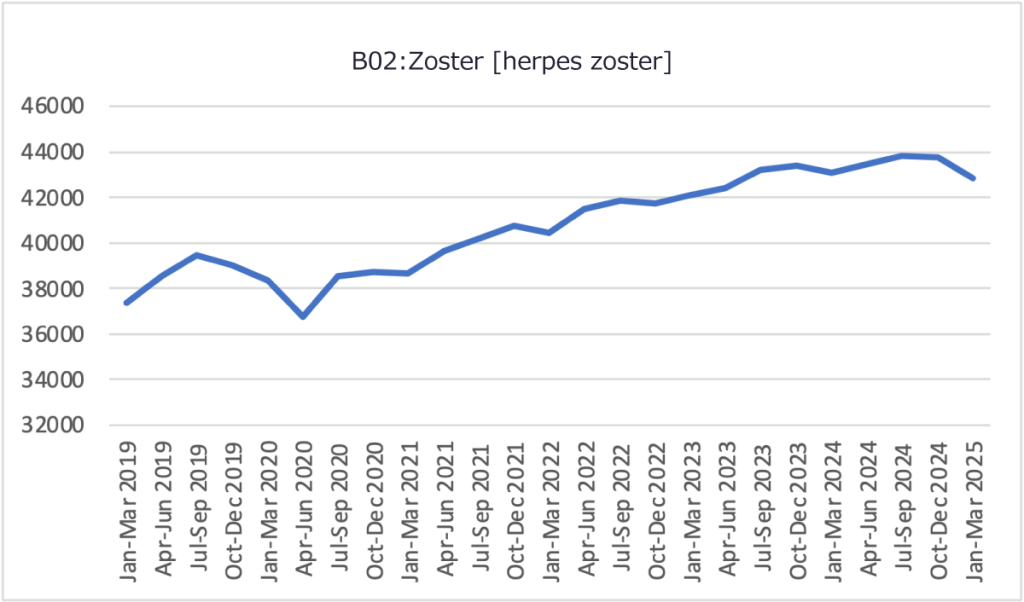
The data shows a noticeable dip in shingles cases in 2020, likely due to limited healthcare access during the COVID-19 pandemic. Since then, however, the number of cases has been steadily climbing.
Monthly Trends
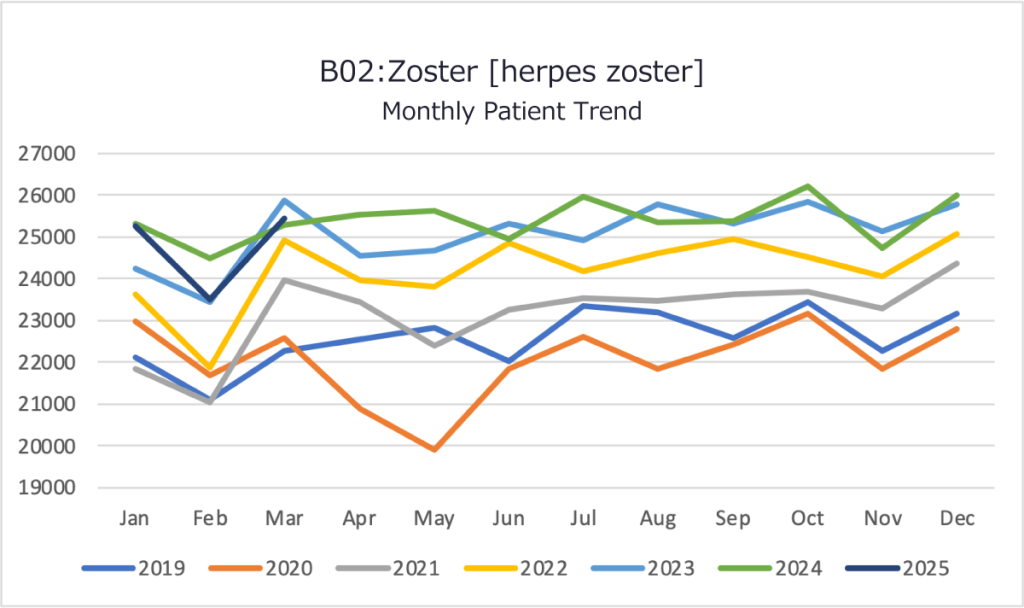
Shingles cases follow a seasonal rhythm. Every year, patient numbers drop in February, then rise from March into spring. Another increase occurs between July and October, pointing to a pattern where shingles is more common in summer and autumn. This could be tied to factors like higher temperatures, humidity, or fatigue weakening the immune system. From November to January, the numbers tend to level off or slightly decline.
Demographic Analysis
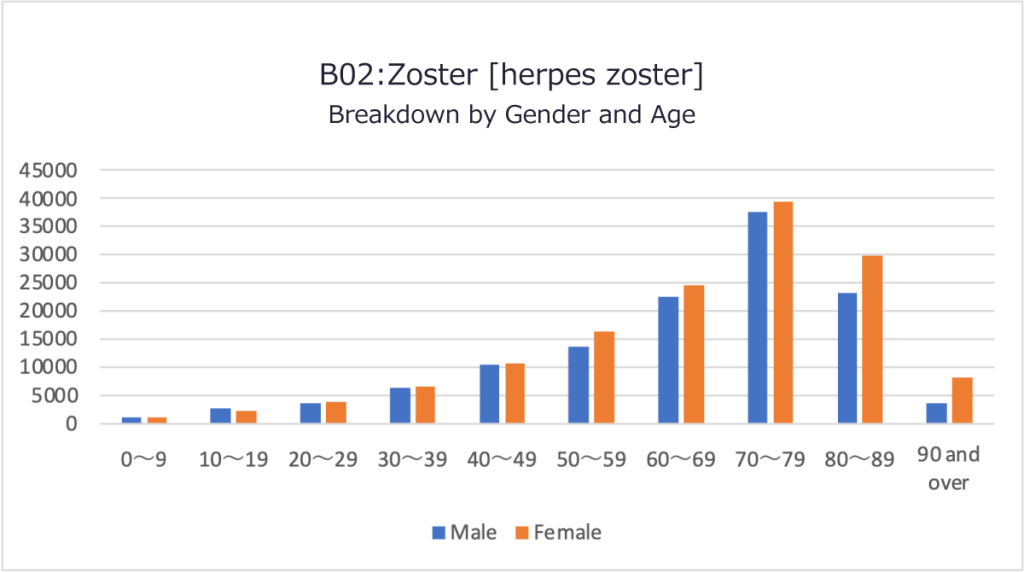
Shingles becomes more common with age, with the highest number of cases occurring in people in their 70s. While both men and women are affected, women are slightly more likely to develop the condition.
Postherpetic Neuralgia (PHN) Incidence
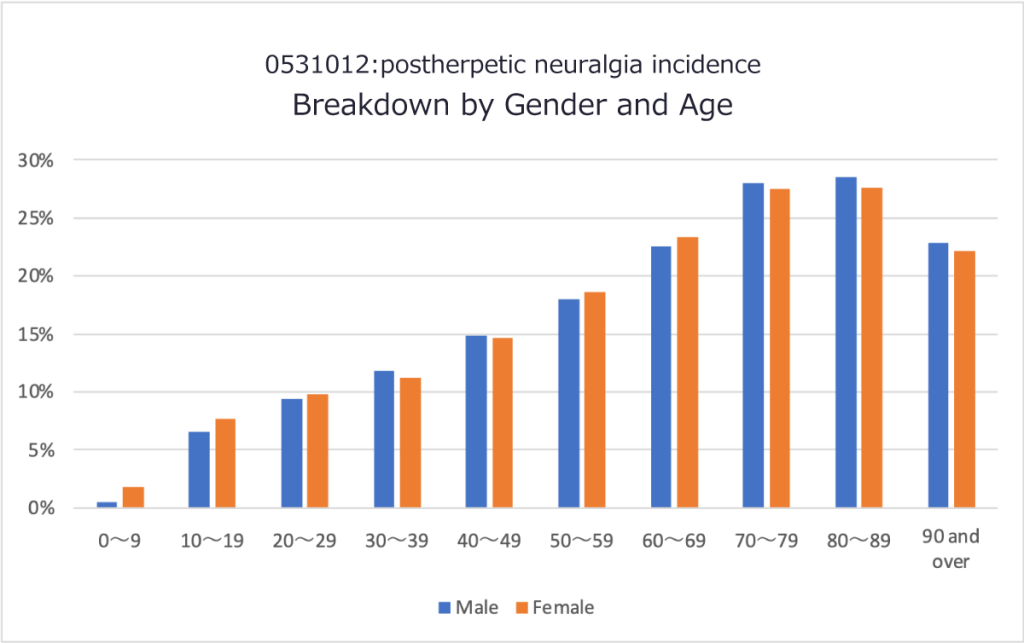
The chance of developing PHN after shingles also rises with age, peaking in individuals in their 80s. Interestingly, men show a slightly higher tendency to experience PHN compared to women.
Distribution by Medical Department
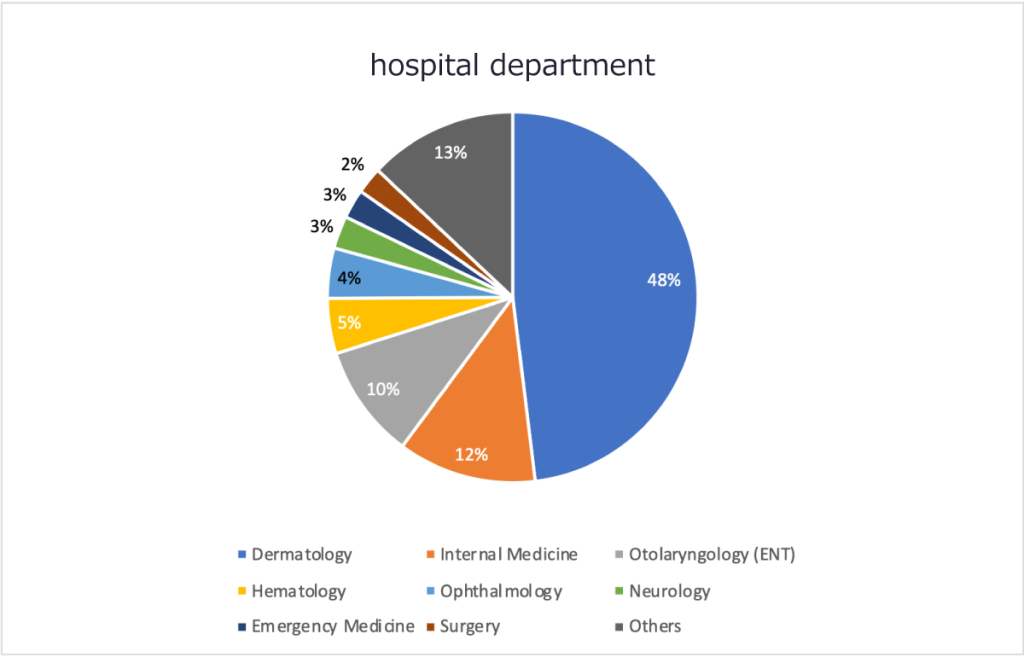
About half of all shingles patients are treated in dermatology departments, which makes sense given the condition’s telltale skin symptoms. Internal medicine and ear, nose, and throat (ENT) departments also see a significant share of cases, likely due to general health issues or symptoms affecting the face and ears. Other departments, such as ophthalmology, neurology, emergency medicine, and surgery, handle a smaller number of patients, depending on where symptoms appear and how severe they are.
Treatment Trends
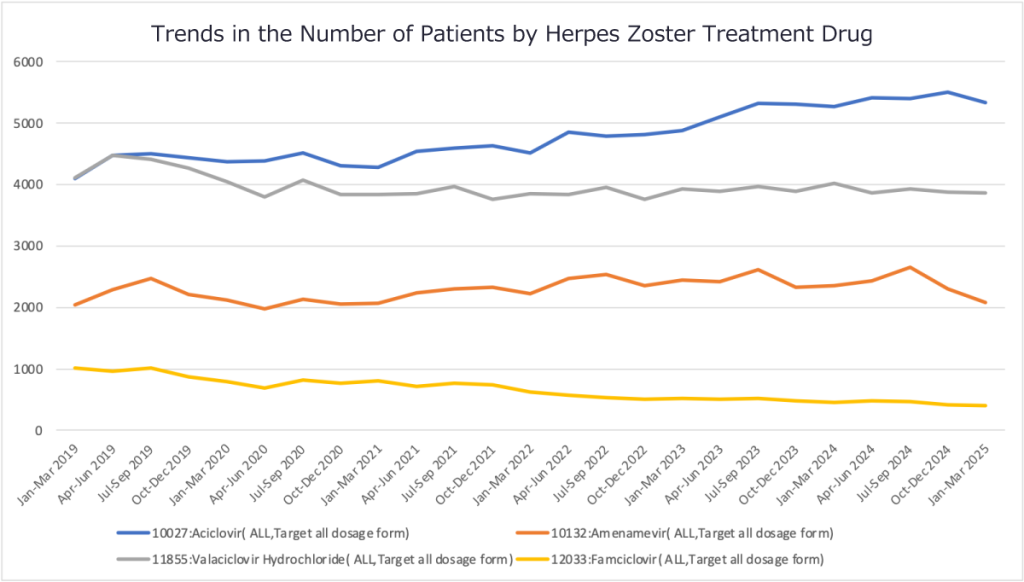
When it comes to treating shingles, acyclovir is the most widely used medication, followed by valacyclovir. Other antiviral drugs, such as amenamevir and famciclovir, are also prescribed. Overall, the use of these treatments has remained steady over the years, though acyclovir has seen a slight uptick in use since 2021.
Note: This article was published on July 1, 2025.
Data survey and analysis tailored to your specific requests
Databases, data analysis requests, and more.
© Medical Data Vision Co., Ltd. All Rights Reserved.





